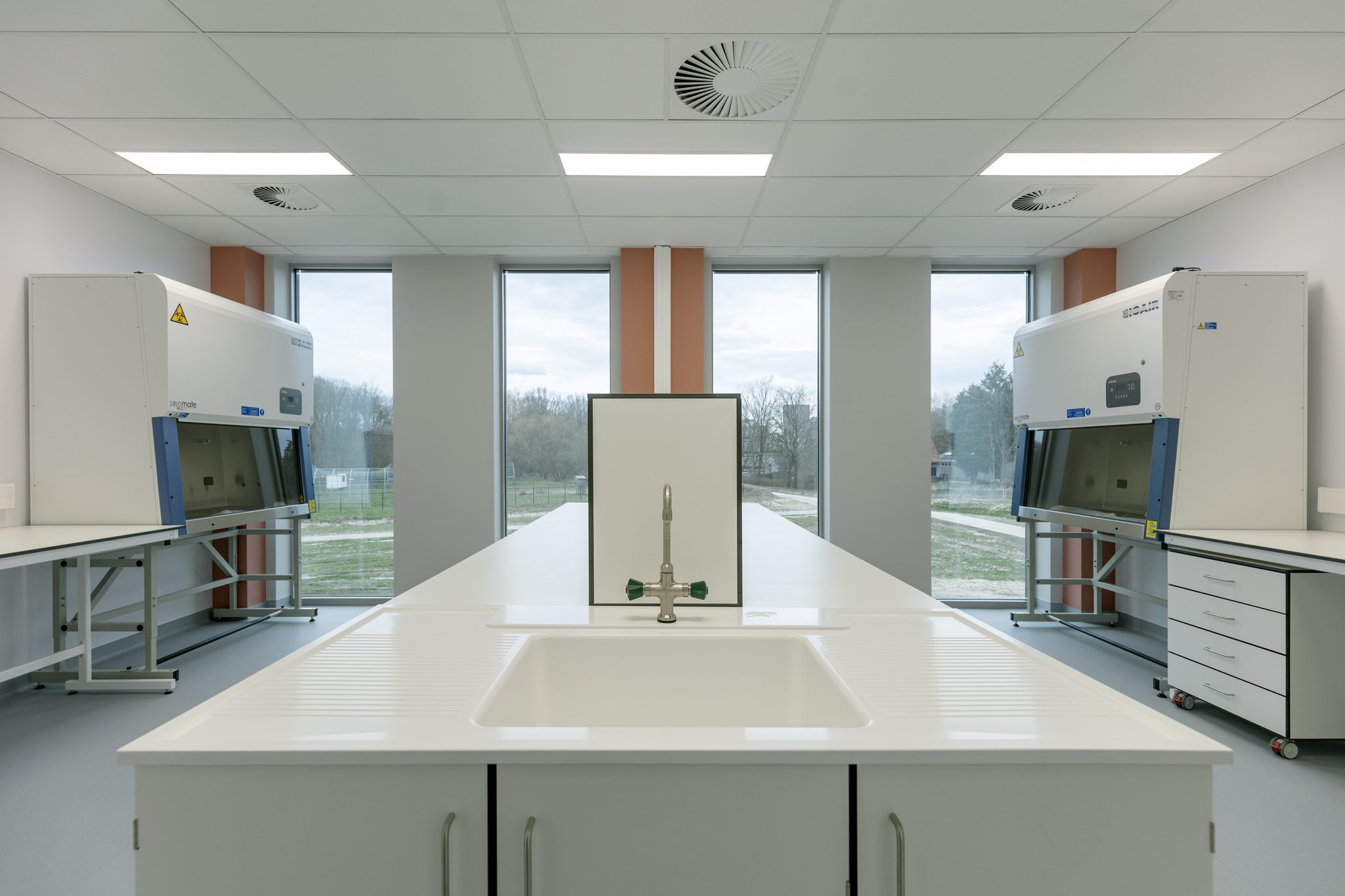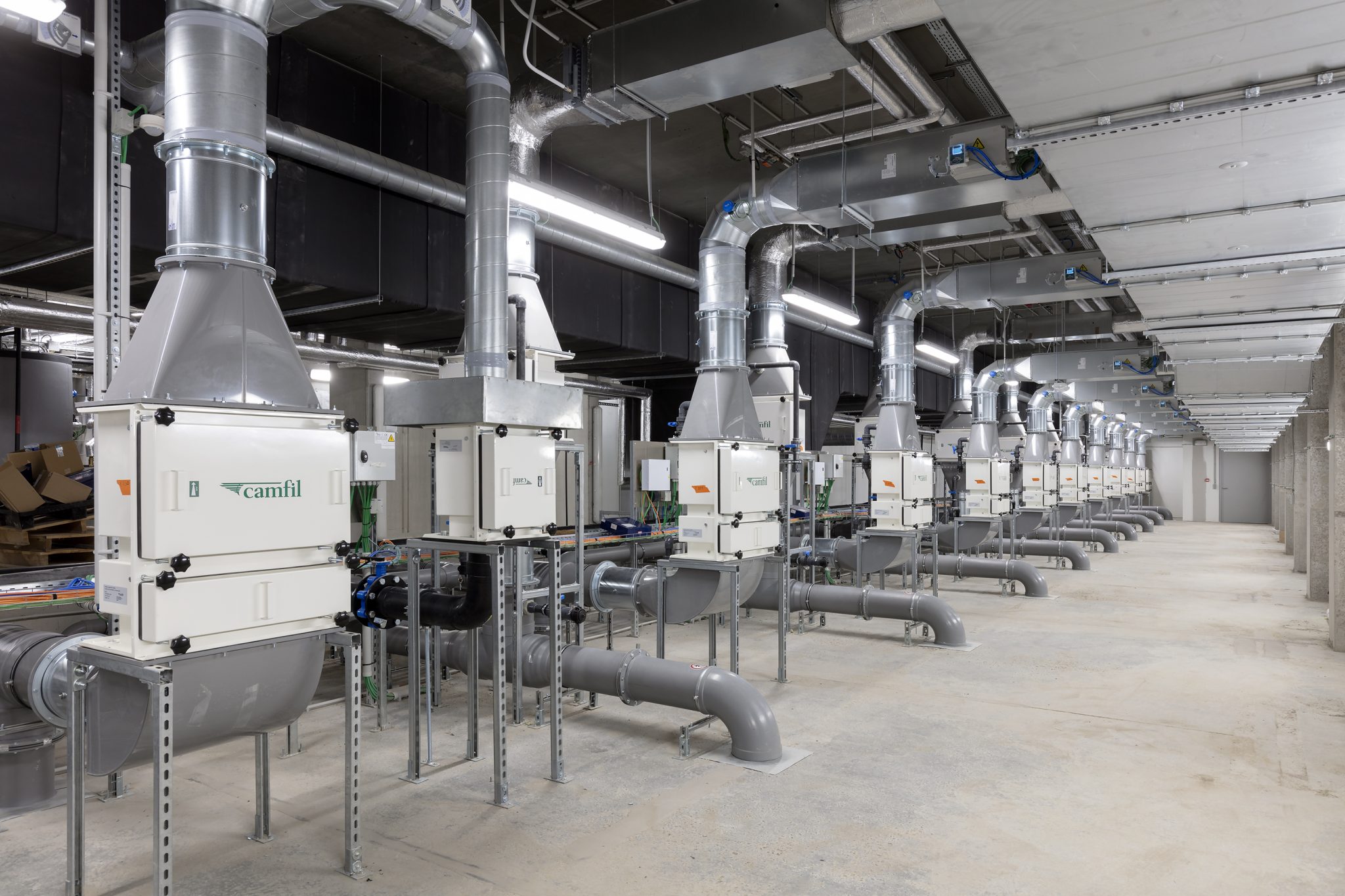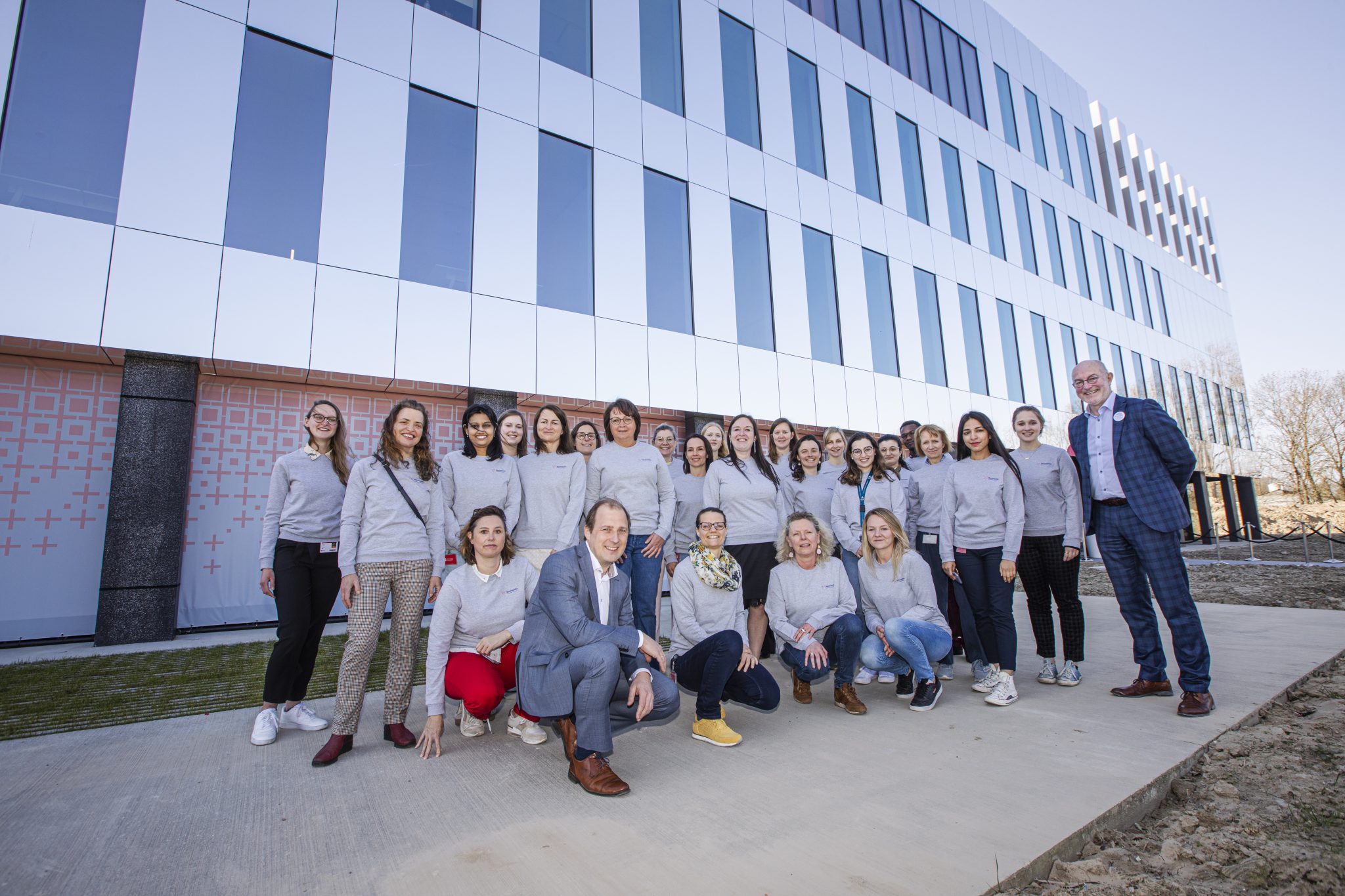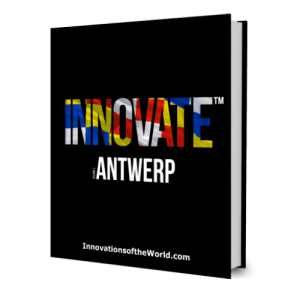A container village on Campus Drie Eiken, in which 30 volunteers took up residence to test polio vaccines, that was the setup for Poliopolis, a study at UAntwerpen conducted within a closed container village on campus, in 2017. To ensure proper follow-up, participants remained in quarantine for 28 days. The study led to a new oral polio vaccine that is now being used in a growing number of countries to further combat infantile paralysis.

Afterwards, the containers of Poliopolis were broken down, but the vaccinologists at UAntwerpen dreamed of more. Led by Prof. Pierre Van Damme, the idea was floated in 2018 to develop a building tailored to Controlled Human Challenge Studies (CHIM), rials in which test subjects are first vaccinated with a candidate vaccine and then after one or two months exposed to a weakened version of a pathogen, to see how the vaccine works. The idea for the building was presented to the then Michel government in 2018, but the fall of that government caused further negotiations to fall through. At the beginning of the corona pandemic, the Wilmès government picked up the plan again. It usually takes four to five years to construct a building that meets all the security measures, but thanks to the smooth cooperation of the various partners – and the catalyzing factor of the corona crisis – Vaccinopolis was ready in 14 months. On March 25, 2022, the center has opened its doors.
More than corona
Just a Quick Note:
InnovationsOfTheWorld.com has partnered with Trade License Zone (TLZ) to support global innovators looking to expand internationally. Take advantage of the UAE’s Free Zones—enjoy streamlined setup, low corporate taxes, and a strategic gateway to the Middle East and beyond.
Get Your UAE Free Zone License Fast & Easy!Numerous studies are needed during vaccine development, as COVID-19 has now demonstrated, although much more research will be done at Vaccinopolis than on COVID-19 vaccines alone. New vaccines, for example against whooping cough or influenza, will be tested there, but there will also hopefully be better answers to diseases that still cause major problems on a global scale, such as dengue, RSV or malaria.

Vaccine move INNO VATE ANTWERP As the climate changes, we live closer together, get older and travel more, germs such as viruses arise and spread faster than ever, as the corona pandemic has aptly made clear. The federal government invested 20 million euros in new vaccine research. In addition to Vaccinopolis, specialized infrastructure at the Université libre de Bruxelles (ULB) was set up, which specializes in research into vaccine-induced immunity. Initially, the existing vaccine studies of UAntwerpen will move to Vaccinopolis. In a second phase, the CHIM studies will also be set up there. For that purpose 30 beds are already available. The academic center is, for the time being, unique on the European continent. The main driving force behind Vaccinopolis is Prof. Pierre Van Damme, vaccinologist at the UAntwerpen. According to him, Vaccinopolis is entirely appropriate here. “In conducting vaccine studies, we have the right expertise all over Belgium. Our university has 30 years of experience in vaccine research and there is also a lot of know-how in the UZA, the Institute of Tropical Medicine and the hospitals in and around Antwerp. We can be an enormously strong link in a larger whole and collaborate with many partners.” What makes the research opportunities at this center so innovative compared to the current infrastructure? Head physician of the clinical trial team Ilse De Coster clarifies. “Before a vaccine reaches the market, it has to go through a whole development process. First it is done in the laboratory, then there are animal tests and finally it is tested on people. First on a very small group, then on a larger group, where the vaccine is constantly being refined. The even larger phase 3 studies involve testing on a very large number of people. This is now done mainly in outpatient form, but the problem is that you then have to vaccinate a lot of people, wait until they are exposed to the pathogen and only then can you see whether the vaccine works. That takes a long time. In CHIM studies, on the other hand, you can test whether the vaccine works in a very short period of time, but you can’t just run them in every facility. This is because it’s important that the pathogens don’t spread into the outside world. On the other hand, you have the advantage that the test subjects can be closely followed up in this way.”

Personalized vaccine “In people who are staying at the center, you can take blood, urine, or nasal and oral mucosa samples every day, which allows you to map out an enormous amount, before and after the intervention with the vaccine,” Van Damme points out. Based on the characteristics, you can even make predictions about how certain population groups will respond immunologically to a particular vaccine. In this way, we can even move towards personalized vaccines in the future.” Of course, all envisaged studies must first be approved by the Federal Agency for Medicines and Health Products (FAMHP), which has strict rules. For example, CHIM studies may only be done with pathogens for which a clear treatment already exists. De Coster adds that Vaccinopolis is by no means just about vaccines against dangerous diseases. “We are also researching vaccines that we still want to refine, such as the flu vaccine, but we are also looking for the right intervention for diseases such as RSV, malaria or dengue. These are diseases that are less in the spotlight here, but for which people have been looking for the right vaccine for years. Now that we have the appropriate infrastructure in place, hopefully we will be one whole step closer to the right answers.” Altruism Bart Van Meerbergen, head of operations at Vaccinopolis and a specialist in biosafety, assures that the facility is more than safe. “Because of the pandemic, there was pressure from the beginning. We moved quite fast, within a very strict framework. The building obviously had to meet strict standards, and in this our technical partners had the right expertise. For example, all incoming and outgoing air goes through powerful HEPA filters that stop all pathogens; there are strict decontamination procedures; the rooms are completely under pressure of minus 35 pascals; there is double glazing everywhere; everything is completely sealed; and there is testing for leaks. There is really nothing that can get out. All those validation stages, of course, we had to submit to the government for approval.” Van Meerbergen is very appreciative of the collaboration between the various partners who helped get the building up and running. “If you communicate openly, you can achieve a lot in a very short time. Ironically, the COVID-19 pandemic did throw a spanner in the works of the supply chain at times, but through strong partnership and a sense of urgency about the building, we have created a world-class facility in 14 months.” The outpatient studies, which currently continue at the Center for the Evaluation of Vaccinations (CEV), are moving to Vaccinopolis, but that will be joined by the CHIM studies at the end of this year. De Coster explains how these will work. “On average, the participants are there for 14 days. Moreover, they are not only isolated from the outside world, sometimes you also live together as a group in a department. That requires quite a lot of people – and so we do an intense screening. We screen not only their health, but also their psychological well-being.”

Bill & Melinda Gates Foundation “The people we screen usually have the profile of a blood donor,” Van Damme points out. “There’s a lot of altruism, they’re doing it to advance science and public health. They do receive fair compensation for covering costs and time, but that doesn’t seem to be the deciding factor with anyone.” “We did see in Poliopolis that certain people used their stay as a timeout,” adds Martina Bamberger, head of innovation at Vaccinopolis. “Someone wrote a book, a student finished his master’s thesis and an architect converted his office with telephone instructions.” Bamberger is responsible for Vaccinopolis’ business development. She ensures Vaccinopolis’ presence at scientific fairs, establishes contacts with companies that want Vaccinopolis to conduct their tests and answers their questions. “There is, especially since corona, a lot of interest from the corporate world to collaborate,” she says. “The Bill & Melinda Gates Foundation and the Coalition for Epidemic Preparedness Innovations (CEPI ) are also in regular contact with Vaccinopolis. At the moment our branding is being fine-tuned, we are presenting ourselves with our new logo and corporate identity at various trade fairs. Fortunately, we already have very good contacts with our outpatient studies. But of course, we are now adding the CHIM trials. Companies that want to have certain vaccines tested have a lot of interest in a collaboration, but they still have questions about, for example, the right level of biosafety and whether there will be approval for that.” Van Damme also says that they are establishing contacts with colleagues in Leiden in the Netherlands, who have a small unit, to strengthen each other. “Because that way we can help each other if a particular study requires a large testing capacity.” What if a particular vaccine candidate turns out to be suitable? “If a vaccine turns out to work well, then the company in question will make the next step to bring the vaccine to the market by submitting a marketing authorization application to the responsible authority. In Europe that is the European Medicines Agency.

A rewarding job And what if no new infectious diseases emerge at all in the near future, will the building be there for nothing? “As long as there are people, there will be infectious diseases,” Van Meerbergen replies. De Coster adds. “Because of climate warming, parasites or mosquitoes in tropical areas bring diseases here over time. Moreover, as the corona crisis illustrated this nicely, pathogens adapt. But even if there are no more new ones, we still don’t have an answer to a lot of diseases in the world. There are still a lot of vaccines that need to be refined or developed.”
All four are incredibly grateful that Vaccinopolis came to be. “When you know that with one or two shots you can prevent so much suffering and keep people healthy, that’s fantastic, isn’t it? Being allowed to participate in vaccine research is a very rewarding job,” concludes De Coster.
Pierre Van Damme is a vaccinologist at UAntwerpen. At the beginning of his career as a general practitioner, he was regularly confronted with HIV and AIDS, which aroused his interest in infectious diseases. He wrote a PhD on hepatitis B vaccination and built his expertise on vaccines at UAntwerpen.
Bart Van Meerbergen is head of operations and is responsible for the proper functioning of Vaccinopolis. He studied biochemistry and has been interested in the prevention of infectious diseases ever since his studies.
Ilse De Coster is chief physician of the clinical trial team at Vaccinopolis. She is currently doing a PhD in polio vaccine studies and was also closely associated with Poliopolis.
Martina Bamberger is head of innovation at Vaccinopolis. She studied microbiology, wrote a PhD in immunology and builds the bridge between academic research and industry within Vaccinopolis.
Text: Arkasha Keysers Photos: Jesse Willems














